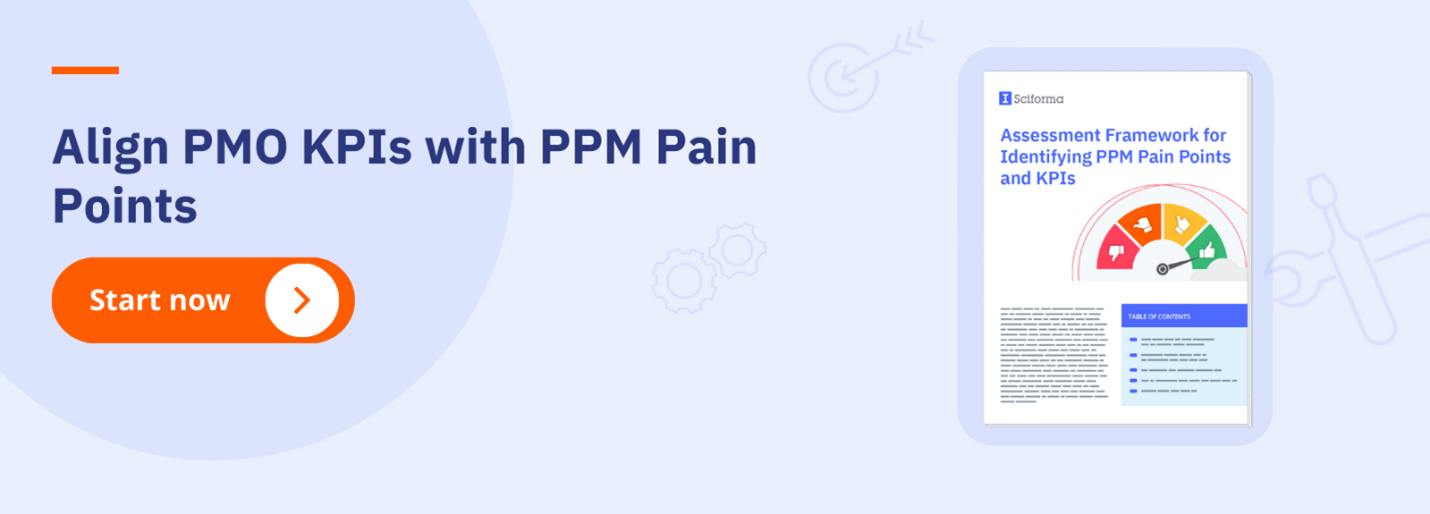Your Guide to the Project Management Office (PMO)
The Project Management Office (or as it’s more commonly known, the PMO) is an organizational group that oversees and standardizes a business’s project management processes. This may include managing resources, budgets, tools, and project data to ensure they align with organizational goals. As businesses evolve, however, the role of the PMO has become so nuanced that its function can seem like a mystery. This guide offers an in-depth look how a PMO works, different types of PMOs, common PMO performance standards and metrics, and how an enterprise PMO (EPMO) software can help make life easier for the entire organization.
Establishing PMO Performance Standards and Value Metrics
The reason why many PMOs are not as successful as they could be often boils down to their inability to communicate their value. The go-live of the PMO is only the start of the journey. You need to map the responsibilities of the PMO to quantitative and qualitative performance metrics—or Key Performance Indicators (KPIs)—in order to know:
- How the PMO is performing and being accepted
- Whether the areas that PMO is responsible for are performing
These PMO success measurements can be used to determine its quality over time and against industry standards.
The Basics: PMO Value Standards and Metrics
Establishing meaningful PMO standards and metrics proves a challenge for many PMOs. To determine which performance indicators to use, start by identifying all metrics that measure the PMO’s impact. This information, known as value metrics, demonstrates what your project management office brings to the table.
A solid set of PMO value metrics should help to:
- Show improvements
- Address key stakeholder pain points
- Facilitate decision making
- Align stakeholders around a shared understanding of project status and performance
- Monitor consistency
- Ensure compliance
What About PMO Performance Metrics?
While value metrics focus on what a PMO does for an organization, performance metrics help you measure the success of those initiatives or value points. Commonly used PMO performance metrics include rates of:
- Strategy-aligned projects
- Project churn
- Customer satisfaction
- Resource utilization
- Stakeholder engagement
- Benefits realization
- Resource cost variance
- Spending
The list of possible PMO performance metrics is virtually endless. But the goal is to help measure your PMO’s success, not to provide a horde of metrics and data points that don’t mean anything to anyone.
It is very important to understand what can be measured right now based on data availability. The information should be readily available, easily producible, reliable, and meaningful. Determine which KPIs you should be measuring now, and which should come into play three, six, or twelve months from now. Archive whatever you cannot measure for now and revisit it later when a more advanced level of monitoring is warranted.
You should also make sure that you will be able to produce your indicators consistently. Tracking PMO KPIs can prove tedious and time-consuming without the right processes and tools. Adopting a powerful productivity tool like Sciforma to automate monitoring and reporting can save you significant time and energy while improving data reliability and accuracy.
Strategies to Improve and Expand the PMO
You have worked hard to establish your PMO as a vital entity with business stakeholders and the project management community. But you can’t rest on your laurels. You need to keep evolving and improve. You need to grow in maturity and continue gaining value across the organization.
The PMO standards and metrics you’ll have established will prove invaluable to meet these goals. They will make it possible to measure overall PMO success. They will help you pinpoint key weaknesses and performance gaps so that you can focus on the right areas. They will enable you to track progress and quantify the impact of your actions. They will also allow you to demonstrate that impact to key stakeholders.
Your PMO standards and metrics will likely be specific to your organization. Optimizing them will therefore require custom PMO methodologies and tools. But here is some general advice that most PMOs can leverage to grow their influence and maturity.
First, PMO leaders should nurture their relationships with the business sponsors who supported the creation of the PMO. By keeping the conversation going, and providing evidence of your PMO’s positive impact, you can reinforce the trust they put in you and secure their continued support.
Evolving your talent pool fast enough is another key requirement for PMO success. Due to the pace of the business change, PMOs should continually refresh skills, affinities, and competencies.
It is equally important to nurture a collaborative PPM culture using relevant PMO methodologies and tools. Fostering a culture of collaboration among the stakeholders using your PPM solution (project managers, executives, etc.) should improve cross-functional alignment with resource-related decisions.






